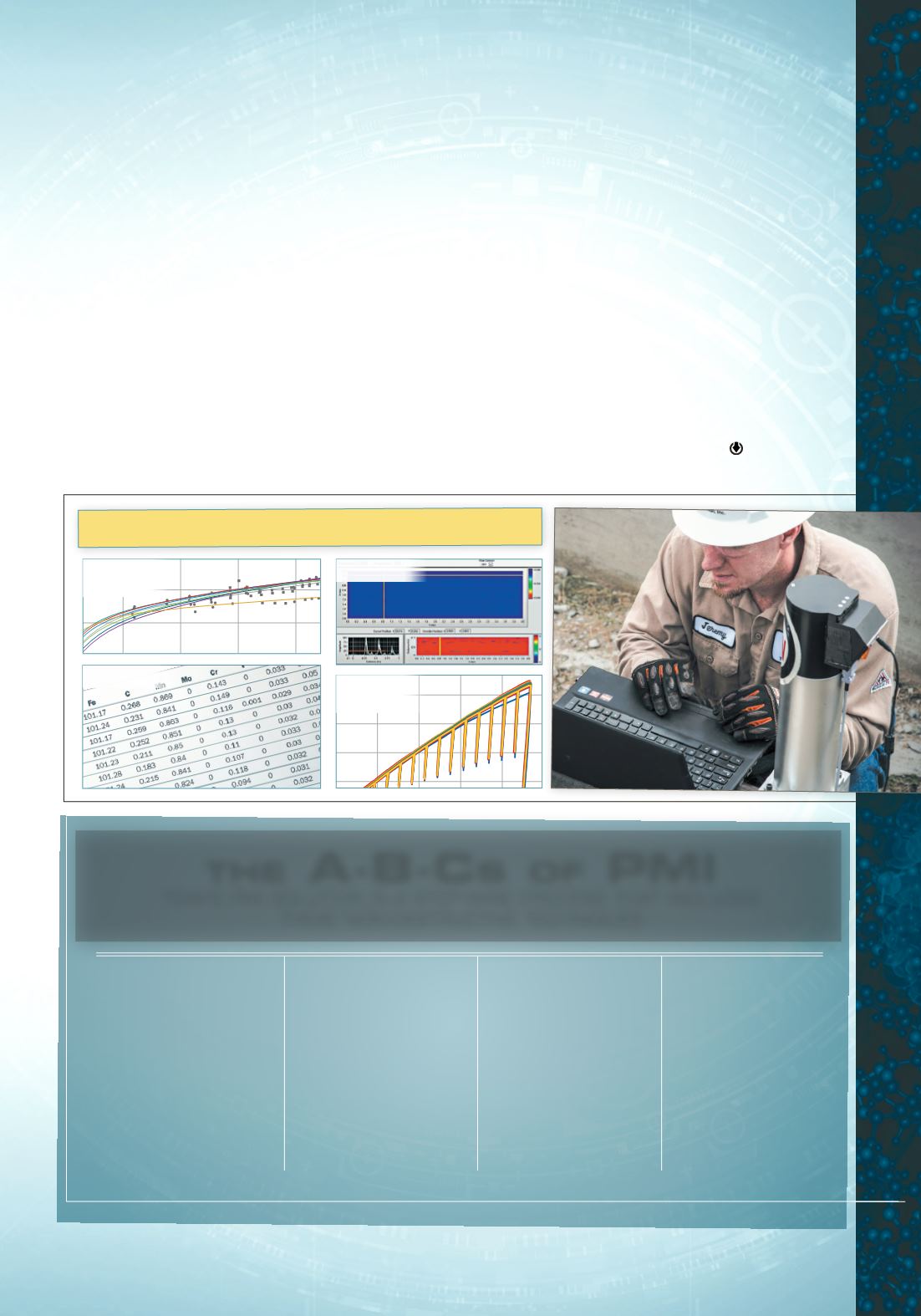

and carbon equivalence. The results are then
compared to American Petroleum Institute
specification API 5L, tables 4 and 6, to ascertain
the pipe material grade.
According to Chris Caraway, NDE Operations
Manager, TDW’s process, performed completely in
the ditch in about four hours, means there’s “zero
destruction to the pipe and product in the line is
never affected. The NDE PMI process leaves no
potential leak path.”
Reporting time is also much shorter than
other PMI methods. Initial findings are almost
instantaneous. The operator often has a draft in-
hand before the technicians leave the field. Normal
turnaround for the complete report is five days.
Which is less time than it takes to get a cheek
swab result back from the DNA lab.
PMI: Determining the DNA of Pipelines
While tracking down relatives and adding leaves to
the family tree can be fun, there’s a serious side to it,
too. Like when that cheek swab identifies potentially
lifesaving information about the genes you share
with your ancestors.
And in that way, PMI is very much like DNA
testing for pipelines: It’s a way to dig deeper than
old records and photographs allow, providing
information at the cellular level, mitigating
risk today and in the future, while maintaining
compliance with industry regulations.
P H M S A C O M P L I A N C E
I N N O V AT I O N S • V O L . V I I , N O. 1 • 2 0 1 5
19
ULTRASONIC THICKNESS
TESTING (UTT)
uses high frequency sound
energy to verify Actual Wall
Thickness (ATW).
AUT B-SCANNER
scans pipes circumferentially
to detect corrosion and other
anomalies.
AUTOMATED BALL
INDENTION (ABI)
uses a sophisticated
algorithm to determine
material yield strength
based on a stress strain
curve generated by
equipment software.
OPTICAL EMISSIONS
SPECTROMETRY (OES)
identifies and determines
the concentration of
elements as well as the
carbon equivalency value
for welding purposes.
MAGNETIC PARTICLE
TESTING (MT)
uses the application
of a magnetic field to
detect the presence of
surface or near-surface
discontinuities.
Data samples identified by PMI techniques:
Yield Strength Data –
Stress Strain Curve
AWT DATA
OES DATA
Yield Strength Data –
Load vs.Depth
TDW’S PMI SOLUTION IS A STEP-WISE PROCESS THAT INCLUDES
THESE NON-DESTRUCTIVE TECHNIQUES
the
A-B-Cs
of
PMI



















